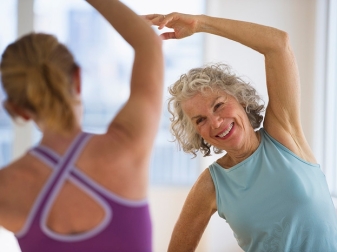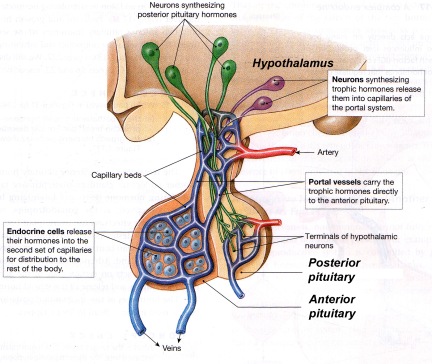Aging: Along with breathing and other basic life functions, it’s the one process that unites us all. From the moment of birth, our bodies are continuously changing, whether we’re maturing through childhood and puberty, or a gradually slowing down in our later years of life. Each year, billions of dollars are dedicated to researching the mechanisms of aging and how to reverse or slow the process. As aging can take many different routes, defining the process can be difficult. In general, aging is associated with the symptom of a decline in optimum functioning of physiological processes … but the causes can vary.

Lifestyle modifications, such as stress reduction, regular and positive social interaction, diet, and intellectual curiosity are just a few of the many routes we can take to improve our health. While these are all important, possibly one of the most profound ways we can alter our well being is through exercise. It’s no secret that incorporating regular exercise into your routine can alter your health in countless positive ways. By maintaining an active lifestyle, we can slow the process of “aging,” make our daily lives more easeful and enjoyable, and delay the onset of certain chronic illnesses. While all types of exercise offer unique benefits, a regular yoga practice (including asana, pranayama, and meditation) simultaneously targets many of our bodily systems. In the next series of posts, we will discuss a few of the many positive changes yoga can ignite to help slow aging-related factors.
One of the more heavily studied realms of biology related to aging is the endocrine system, which regulates our body’s hormones or chemical messengers. You can picture hormones as small floating keys, which travel through the bloodstream until they reach their target “lock” (receptor) on different tissues.  Once a hormone binds to its lock, it can alter the behavior and function of our cells, tissues, and organs. While there is a body of research describing the many different ways yoga can affect several of our hormones, we will focus on just a few in this post.
Once a hormone binds to its lock, it can alter the behavior and function of our cells, tissues, and organs. While there is a body of research describing the many different ways yoga can affect several of our hormones, we will focus on just a few in this post.
Before diving into the specific hormones, a basic knowledge of how the endocrine system works it useful. Intricately tied to the brain and nervous system, the endocrine system houses it’s control center deep within the skull in the form of the hypothalamus, the master connector of the nervous and endocrine systems. While the hypothalamus has several functions, one is to release the local, primary hormones that travel a short distance to activate a subsequent organ to release a secondary hormone. While this first, primary hormone release might seem superfluous, the body utilizes this two-part hormonal activation to maintain tight control over hormones that have profound systemic impacts. It kind of works like online banking login security does, when we’re required to provide two types of confirmation before we can access our accounts. The body utilizes a similar type of tight accounting to maintain proper hormone levels and avoid imbalances.
 Once a primary hormone is released from the hypothalamus, it travels through a portal blood system to the anterior pituitary gland, a pea-sized gland that rests in a bony, protective region of the skull called the cella turcica. Depending on which “lock” on the pituitary gland is activated, a secondary hormone is either inhibited or released directly into the bloodstream to be transported to all of the tissues in the body. Together, this intelligent system of keys and locks maintains control over many of our body’s functions.
Once a primary hormone is released from the hypothalamus, it travels through a portal blood system to the anterior pituitary gland, a pea-sized gland that rests in a bony, protective region of the skull called the cella turcica. Depending on which “lock” on the pituitary gland is activated, a secondary hormone is either inhibited or released directly into the bloodstream to be transported to all of the tissues in the body. Together, this intelligent system of keys and locks maintains control over many of our body’s functions.
Research has demonstrated that yoga can impact this accounting system, specifically the release of human growth hormone (HGH). Aptly named, this hormone is responsible for controlling growth, metabolism, and repair of almost all tissues of the body. Unfortunately, as we age the locks and keys controlling HGH release grow rusty, resulting in steady decline of its levels throughout the body. This decline dampens natural repair processes and contributes to the degradation of our bodily tissues. Now for some good news: incorporating yogic practices such as asana, pranayama (discussed in a previous post), and meditation can help increase HGH levels in the bloodstream, allowing the locks on tissues to be turned back on. Once these locks are activated, a cellular cascade is initiated, which results in repair of damaged tissue and positive growth.
Bringing this back to the mat, incorporating even a short yoga practice into your daily routine provides a tuneup for your endocrine system. With this fresh polish, growth hormones are released into the bloodstream, re-activating locks in tissues throughout the body, which in turn invigorate the repair and growth of our tissues. In upcoming posts, we will discuss additional locks that yoga opens, as well as several other physiological factors that contribute to longevity. While there are several routes to chose from to help maintain our vitality, yoga appears to affect a wide variety of systems to help us age with ease and grace.

Looking forward to the keys! Great article!
LikeLike